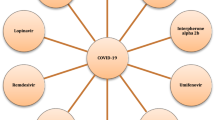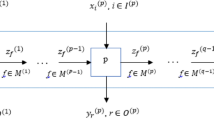Abstract
This study proposes a new multi-objective mathematical model in pharmaceutical supply chain for natural disaster response considering quality, green concepts. The proposed model includes three objective functions. The first minimizes total manufacturing costs including production costs, purchasing costs, opening manufacturing plant costs, opening distribution centers costs, transportation costs and cost of poor quality (appraisal and prevention costs). The second minimizes environmental effects of products and transportations. The third maximizes humanitarian forces. Before disaster occurrence, to efficiently predict the objective functions values, we apply the back propagation (BP)—neural network, hybrid genetic algorithm (GA)—artificial neural network and particle swarm optimization (PSO). Finally, the effectiveness of the proposed solution shows the proposed multi objective optimization technique and its feasibility to be adopted as suitable methodology. The obtained results illustrate that the BP had high performance, which its R 2 was 0.99. Managerial implications of this research focus on improving the efficiency and effectiveness of the healthcare supply chain for natural disaster response: saving time, minimizing costs, minimizing environmental impact, utilizing resources more effectively (e.g. financial, human, technical, assets, transportation), showing social responsibility for communities affected by the disaster and continuously improving healthcare supply chain management.








Similar content being viewed by others
References
Abbas HB, Routray JK (2014) Assessing factors affecting flood-induced public health risks in Kassala State of Sudan. Oper Res Health Care 3(4):215–225
Abdalla OA, Elfaki AO, Almurtadha YM (2014) Optimizing the multilayer feed-forward artificial neural networks architecture and training parameters using genetic algorithm. Int J Comput Appl 96(10):42–48
Chern CC, Chen YL, Kung LC (2010) A heuristic relief transportation planning algorithm for emergency supply chain management. Int J Comput Math 87(7):1638–1664. doi:10.1080/00207160802441256
Choi SH (2011) Neural network model for prediction of damage cost from storm and flood. J KIISE Soft Appl 38(3):115–123
Dasaklis TK, Pappis CP, Rachaniotis NP (2012) Epidemics control and logistics operations: a review. Int J Prod Econ 139(2):393–410
Daskin M, Coullard C, Shen ZJ (2002) An inventory-location model: formulation, solution algorithm and computational results. Ann Oper Res 110:83–106
Eberhart RC, Kennedy J (1995) A new optimizer using particle swarm theory. In: Proceedings of the sixth international symposium on micro machine and human science, pp 39–43
Fahimnia B, Jabbarzadeh A, Ghavamifar A, Bell M (2015) Supply chain design for efficient and effective blood supply in disasters. Int J Proc Econ. doi:10.1016/j.ijpe.2015.11.007
Fénies P, Gourgand M, Tchernev N (2004) Une contribution à la mesure de la performance dans la supply chain hospitalière: L’exemple du processus opératoire. In: 2ème conférence francophone en Gestion et Ingénierie de Systèmes Hospitaliers (GISEH), Mons
Gao L, Zhou C, Gao HB, Shi YR (2006) Combining particle swarm optimization and neural network for diagnosis of unexplained syncope. In: Huang DS, Li K, Irwin GW (eds) International conference on intelligent computing. Springer, Berlin, pp 174–181
Gold S, Seuring S, Beske P (2010) Sustainable supply chain management and inter-organizational resources: a literature review. Corp Soc Responsib Environ Manag 17(4):230–245
Gupta A, Evans GW, Heragu SS (2013) Simulation and optimization modeling for drive-through mass vaccination—a generalized approach. Simul Model Pract Theory 37:99–106
Hale T, Moberg CR (2005) Improving supply chain disaster preparedness: a decision process for secure site location. Int J Phys Dis Logist Manag 35(3):195–207
Jabbarzadeh A, Fahimnia B, Seuring S (2014) Dynamic supply chain network design for the supply of blood in disasters: a robust model with real world application. Trans Res Part E Logist Trans Rev 70:225–244
Jahre M, Dumoulin L, Greenhalgh LB, Hudspeth C, Limlin P, Spindler A (2010) Improving health systems in developing countries by reducing the complexity of drug supply chains. In: RIRL the 8th international conference on logistics and SCM research, BEM Bordeaux Management School
Kovács G, Spens K (2007) Humanitarian logistics in disaster relief operations. Int J Phys Dis Logist Manag 37(2):99–114
Lin YH (2010) Delivery of critical items in a disaster relief operation: centralized and distributed supply strategies. Dissertation, University of Buffalo
MacKenzie CA, Barker K, Santos JR (2014) Modeling a severe supply chain disruption and post-disaster decision making with application to the Japanese earthquake and tsunami. IIE Trans 46(12):1243–1260. doi:10.1080/0740817X.2013.876241
McCulloch WS, Pitts W (1943) A logical calculus of the ideas immanent in nervous activity. Bull Math Biol 5:115–133
Mcfadden KL, Henagan SC, Gowen CR (2009) The patient safety chain: transformational leadership’ s effect on patient safety culture, initiatives, and outcomes. J Oper Manag 27:390–392
Meiller Y, Bureau S, Zhou W, Piramuthu S (2011) Adaptive knowledge-based system for health care applications with RFID-generated information. Decis Support Syst 51(1):198–207
Mete HO, Zabinsky ZB (2010) Stochastic optimization of medical supply location and distribution in disaster management. Int J Prod Econ 126(1):76–84
Pujawan IN, Kurniati N, Wessiani NA (2009) Supply chain management for disaster relief operations: principles and case studies. Int J Logist Syst Manag 5:679
Reyes PM, Li S, Visich JK (2012) Accessing antecedents and outcomes of RFID implementation in health care. Int J Prod Econ 136(1):137–150
Rezaei-Malek M, Tavakkoli-Moghaddam R, Zahiri B, Bozorgi-Amiri A (2016) An interactive approach for designing a robust disaster relief logistics network with perishable commodities. Comput Ind Eng. doi:10.1016/j.cie.2016.01.014
Rojas R (1996) Neural networks. Springer, Berlin
Rumelhart DE, Hinton GE, Williams RJ (1988) Learning representations by back-propagating errors. In: Polk TA (ed) Cognitive modeling. Bradford Book, London, pp 213–222
Sha Y, Huang J (2012) The multi-period location-allocation problem of engineering emergency blood supply systems. Syst Eng Proc 5:21–28
Shen ZJM, Coullard C, Daskin MS (2003) A joint location-inventory model. Trans Sci 37:40–55
Sheu JB, Pan C (2014) Relief supply collaboration for emergency logistics responses to large-scale disasters. Transportmetrica A Trans Sci. doi:10.1080/23249935.2014.951886
Sugisaka M, Xinjian F (2005) An effective search method for neural network based face detection using particle swarm optimization. IEICE Trans Inform Syst 88(2):214–222
Syahrir I, Suparno Vanany I (2015) Healthcare and disaster supply chain: literature review and future research. Industrial engineering and service science 2015, IESS 2015. Proc Manuf 4:2–9
United Nations Office for Disaster Risk Reduction report (UN/DRR) (2013) Using science for disaster risk reduction executive summary. http://www.unisdr.org/files/32609_stagreport2013executivesummaryeng.pdf. Accessed 2 Nov 2014
Wackerly D, Mendenhall W, Scheaffer RL (2007) Mathematical statistics with applications. Brooks/Cole, Boston
Wang SC (2003) Artificial neural network. In: Wang SC (ed) Interdisciplinary computing in java programming. Springer, Berlin
Wassenhove LNV (2006) Humanitarian aid logistics: supply chain management in high gear. J Oper Res Soc 57:475–489
Yusiong JP, Naval PC Jr (2006) Training neural networks using multiobjective particle swarm optimization. In: Jiao L, Wang L, Gao X, Liu J, Wu F (eds) International conference on natural computation. Springer, Berlin, pp 879–888
Zheng YJ, Ling HF (2012) Emergency transportation planning in disaster relief supply chain management: a cooperative fuzzy optimization approach. Soft Comput 17:1301
Author information
Authors and Affiliations
Corresponding author
Rights and permissions
About this article
Cite this article
Zavvar Sabegh, M.H., Mohammadi, M. & Naderi, B. Multi-objective optimization considering quality concepts in a green healthcare supply chain for natural disaster response: neural network approaches. Int J Syst Assur Eng Manag 8 (Suppl 2), 1689–1703 (2017). https://doi.org/10.1007/s13198-017-0645-1
Received:
Revised:
Published:
Issue Date:
DOI: https://doi.org/10.1007/s13198-017-0645-1




